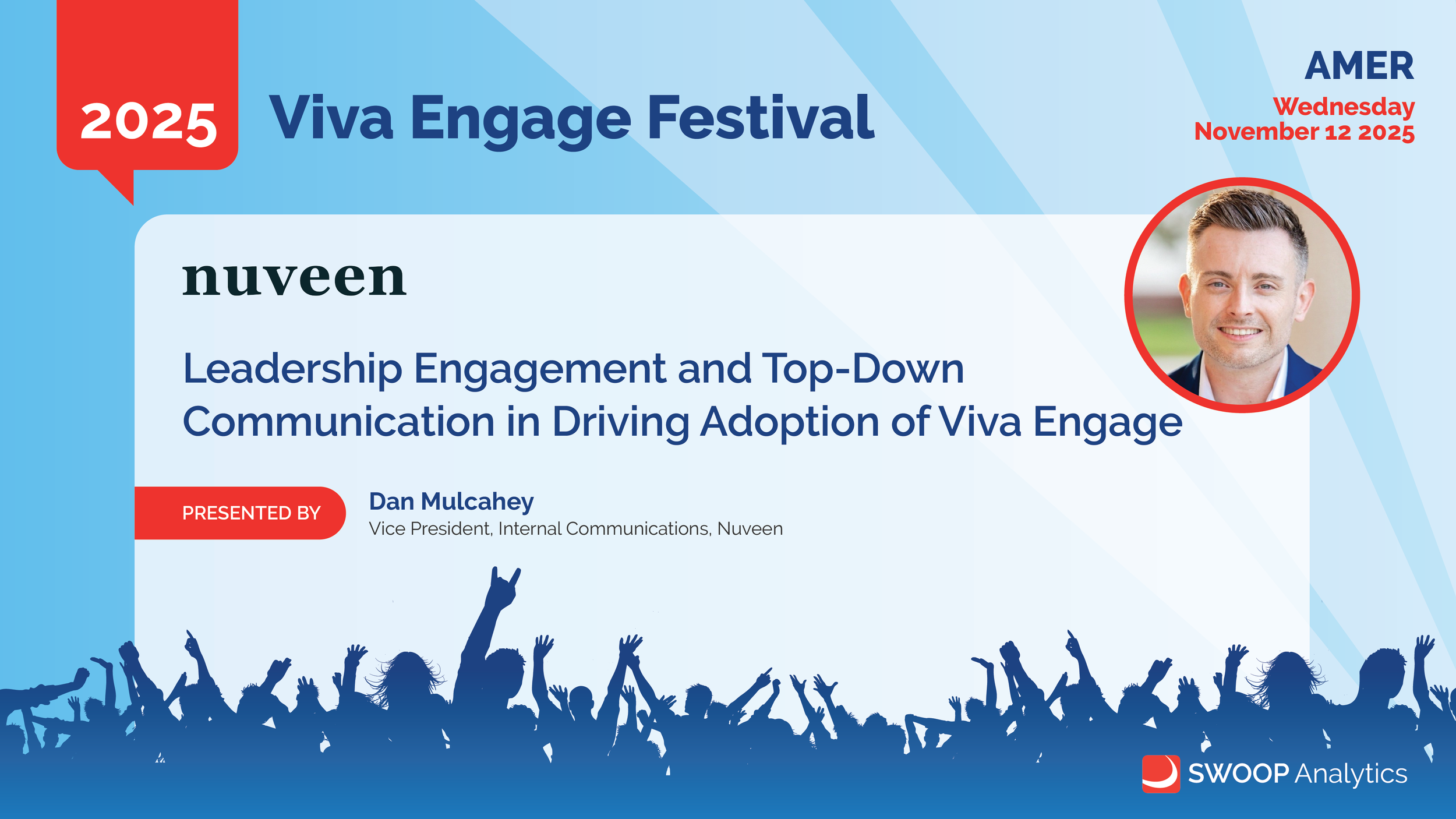How Medibank used Viva Engage to amplify its commitment to mental health
What this session was about
Medibank shared how they used Viva Engage to support a major national mental health campaign by turning it into a safe, two-way internal conversation, not just another corporate announcement.
-
Key Messages
Employees were given the “inside scoop” first.
Before any external launch, staff were brought into the story early through Viva Engage livestreams and CEO updates.Viva Engage became the “conversation space”, not the broadcast channel.
It hosted Q&As, employee reactions, shared stories, personal posts, and community discussion.They repurposed external content internally, cleverly.
TV segments, influencer content, expert interviews and resources were reused inside Viva Engage to remove duplication and spark dialogue.A long-running content series-built trust and momentum.
Medibank didn’t rely on one post. They ran months of livestreams, challenges, updates and reflective activities tied to mental fitness.Leaders modelled vulnerability.
Personal stories shared by senior leaders set the tone and signalled psychological safety.Campaign hashtags made content discoverable and trackable.
#MentalFitness and #FamilyRoast anchored the narrative and helped Medibank monitor engagement across different parts of the business.Analytics guided the next move.
SWOOP insights showed which content formats resonated and where additional support was needed.
What you can take from this?
Internal campaigns land better when employees see them first.
Emotional honesty from leaders sets the tone for everyone else.
Long-running, low-pressure activities work better than one big splash.
You don’t need “more content” — you need better reuse of what you already have.
If you want people to speak up, you have to model it.
Meet the speaker:
Cat Owen
Employee Change & Communications Business Partner






